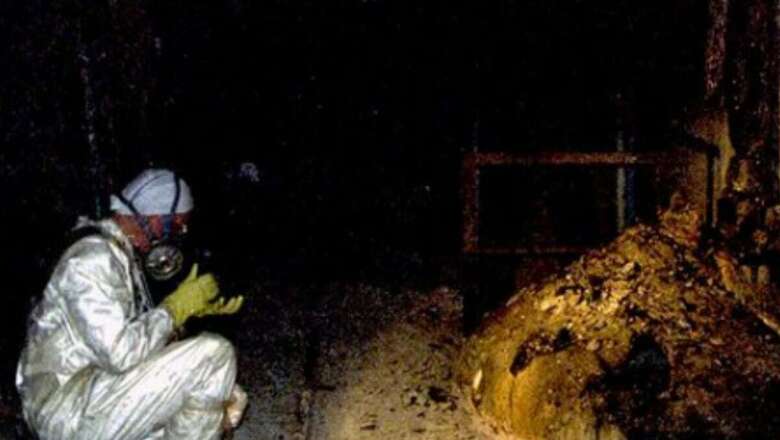
views
There is no known material in the world that is as dangerous as corium. It is widely believed that just standing a few feet apart from it for five minutes, without protective gear, can kill you due to radiation poisoning. Corium is a lava-like material which is made when nuclear fuel mixes with uranium, plutonium, steam, and air. It only occurs during a nuclear meltdown accident. So far, corium has been accidentally created just five times in history. Once during the Three Mile Island accident in Pennsylvania in 1979, at the Chernobyl Nuclear Power Plant in 1986, and three times at the Fukushima Daiichi plant during the strong 2011 earthquake and tsunami in Japan.
In December 1986, a few months after the Chernobyl Nuclear Power Plant disaster, emergency workers ventured into the power plant. During their investigation, they spotted a large, solid lava-like structure, which they named Elephant’s Foot because of its resemblance to the foot of an elephant. This structure was made of corium. Artur Korneyev, radiation specialist and the deputy director of the New Safe Confinement Project, managed to take photographs of the Elephant’s Foot.
Elephant’s Foot was located in a maintenance corridor below the remains of Reactor No. 4, the main point of disaster. The corium that made the Elephant’s foot was so strong that it burnt through at least two meters of reinforced concrete to reach its current location.
Discovering this highly radioactive structure prompted the authorities to start stabilising the remaining structure and cover it with a sarcophagus, a massive steel and concrete structure used to prevent radiation from spreading.
When corium is created as a result of a nuclear disaster, one of the priorities is to prevent it from spreading. Scientists cool it down so it can solidify. If corium is not cooled then it can even melt through the heavy walls of the powerplant. Scientists have now learned to reduce the reactivity of corium.
As of 2021, the corium-made Elephant’s foot has disintegrated into the consistency of sand. According to Science.org, the Ukraine government hopes to collect the corium and store it in a much safer geological repository.
















Comments
0 comment